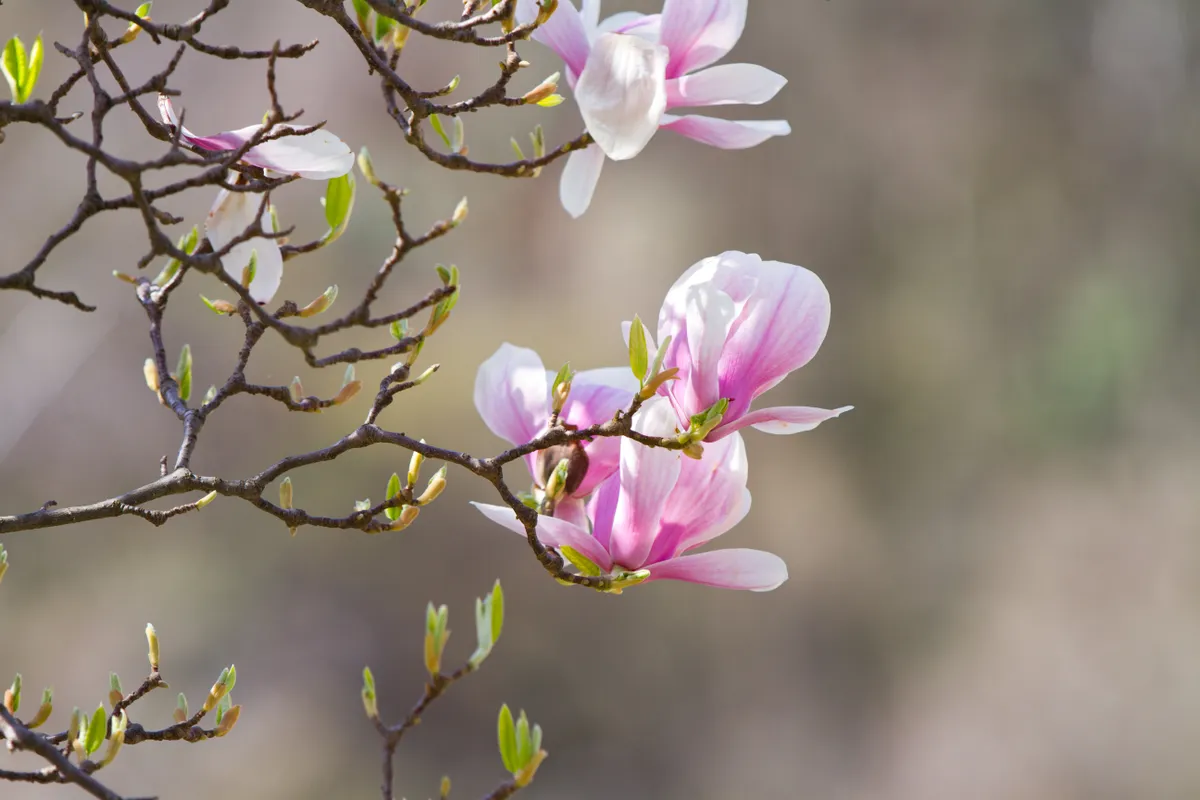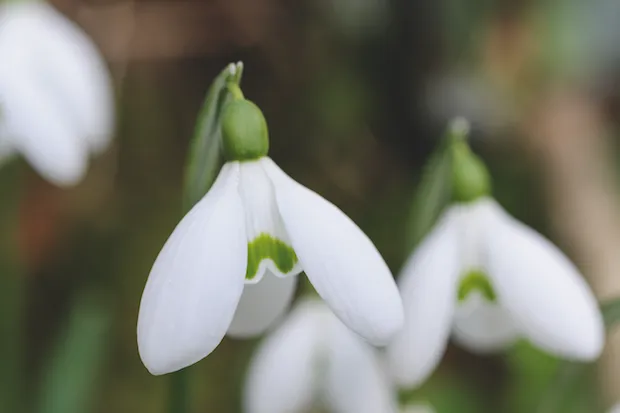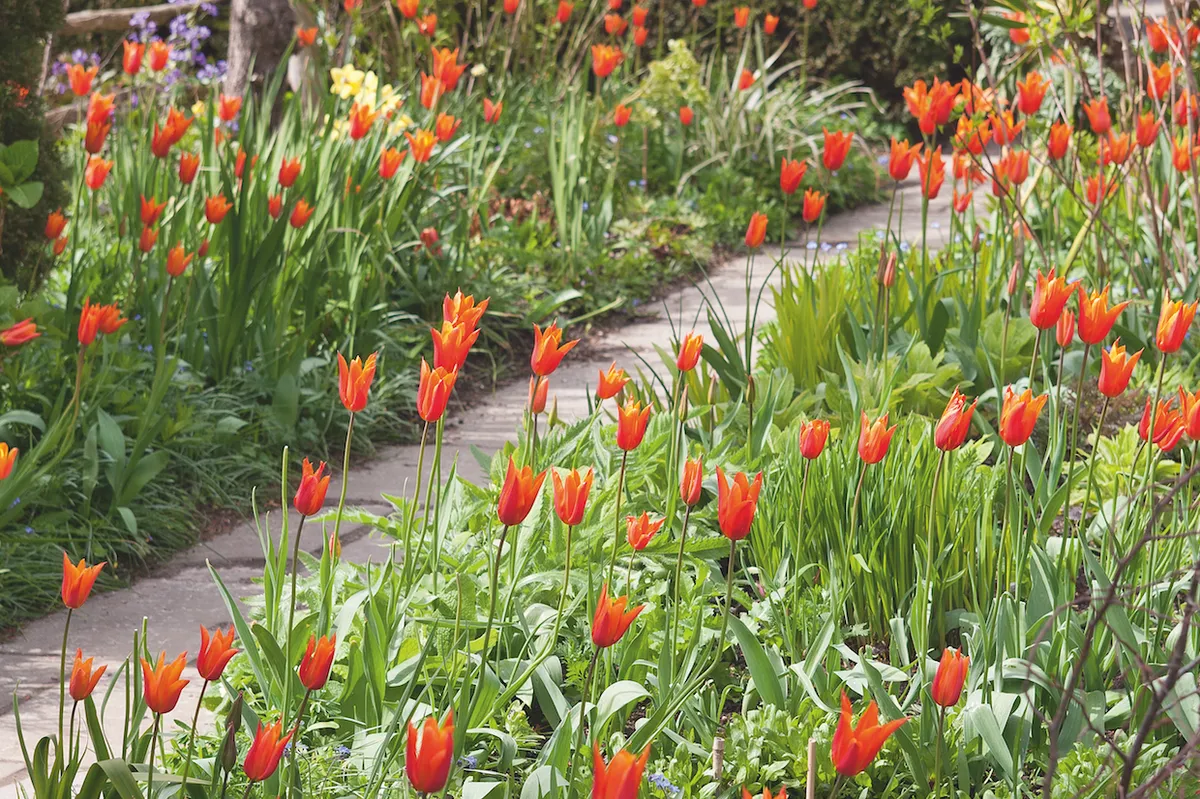Scented flowers are key to a beautiful garden, and with the right selection of plants it's possible to fill your outdoor space with scented flowers all year round. It adds another dimension beyond the visual. Luckily, there's lots of choice and there are plenty of beautifully scented flowers for every season. Below we look into why flowers smell and why it's so important for pollination and we asked plant expert Val Bourne to come up with a guide to choosing the best plants to have scent in the garden throughout the year and here is her recommended list.
Read our feature on why flowers smell
26 of the best scented plants
HIGH SUMMER TO AUTUMN

1
Cosmos atrosanguineus
These dusky flowers smell of cocoa powder, although you have to get close to pick up the scent. The scent gets stronger as the day wears on, so place it where warm afternoon sun falls. Either keep it in a warm greenhouse from year to year, or save the small tubers – as you would a dahlia. 90cm. USDA 8a-10b
2
Rosa ‘Buff Beauty’
This hybrid musk rose needs a warm position and light-pruning regime. Once established, it will produce soft-apricot flowers against red-tinted leaves, through summer until late autumn. 1.2-1.5m. AGM*. RHS H6. USDA 6a-10b.
3
Buddleja davidii ‘Pink Delight’
Not for the faint-hearted, this vivid-pink buddleja with the enormous pink spikes is the most honey-scented I know. In August I have counted over 60 peacock butterflies on one bush. 3m. AGM. RHS H5. USDA 6a-9b.
4
Clematis heracleifolia ‘Cassandra’
Another butterfly magnet, this herbaceous clematis has late summer and autumn flowers in a striking blue over many weeks. This one, though a trifle floppy, won’t need staking. 1.2m. USDA 5a-9b.
5
Lonicera periclymenum ‘Graham Thomas’
This grey-leaved woodbine has creamy-white flowers that age to pumpkin-orange. Like all European woodbines, its scent is stronger at night. 2.4m. AGM. RHS H5. USDA 5a-9b.
6
Rosa ‘Cornelia’
Probably the best of Pemberton’s hybrid musks, producing a continuous stream of small copper-pink flowers that emerge from darker buds, held in clusters. 1.2m. AGM.
RHS H6. USDA 5a-10b.
7
Actaea simplex (Atropurpurea Group) ‘James Compton’
With slender spires of white flowers, this is the most fragrantly scented of the dark-leaved bugbanes, Prefers moisture-retentive soil. Happiest in light shade. 1.2m. AGM. RHS H7.USDA 5a-9a.
8
Lilium ‘Muscadet’
Oriental lilies with pallid flowers have the most powerful scent. They make ideal container plants, although you must use supports and ericaceous compost. ‘Muscadet’ is white subtly spotted in mid-pink. 1.2m. USDA 4a-9b.
9
Magnolia grandiflora
An evergreen magnolia for a sheltered position with huge citrus-scented flowers the colour of clotted cream that appear sporadically throughout summer, thereby escaping any frost damage. 10m x 10m. USDA 6a-10b.
10
Phlox paniculata ‘Franz Schubert’
Border phloxes have a sweet perfume and this lilac-grey phlox bred by the late Alan Bloom is no exception. It glows in the evening light and is less demanding about moisture and soil than many. 90cm. USDA 4a-8b.
11
Nicotiana sylvestris
This tall, white, night-scented tobacco plant has long tubed flowers designed to attract moths. A South American native, it needs a warm position to perform. Sets copious amounts of seed. 1.5m. AGM. RHS H2.
AUTUMN TO WINTER

12
Iris unguicularis
This Mediterranean iris needs a hot spot against a south-facing wall. Given these conditions, it will produce random flowers from November, finishing with a flourish in March. Picked and placed indoors, these fragrant beauties unfurl their slender buds within a few minutes. 50cm. USDA 7a-9b.
13
Chimonanthus praecox ‘Grandiflorus’
The translucent, pendant yellow flowers are brighter and larger than most, with a red stain on the inners. It’s highly scented and does well in a vase. 3m. AGM. RHS H5. USDA 6a-9b.
14
Viburnum x bodnantense ‘Charles Lamont’
There are some fine forms of this hybrid, but ‘Charles Lamont’ bears masses of silver-pink flowers on bare wood, and is more consistent. 3-4.5m. AGM. RHS H6. USDA 6a-9b.
15
Hamamelis x intermedia ‘Aurora’
The branching, open shape, large flowers and floriferous habit of ‘Aurora’, plus its exceptional freesia scent, make this subtle-orange witch hazel very special indeed.
3-4m. AGM. USDA 5a-8b.
16
Galanthus ‘S. Arnott’
Dubbed the giant snowdrop, this honey-scented hybrid loves a slope. The single flowers resemble pearl drops and the low foliage doesn’t detract either. 30cm. AGM. RHS H5. USDA 4a-8b.
SPRING TO EARLY SUMMER

17
Daphne odora ‘Aureomarginata’
The scent from the two-tone lilac and rose-pink flowers really carries on a warm spring afternoon. Almost lily-like, the fragrance lingers in the air too, so find it a place near a doorway or path. 1-1.2m. USDA 7a-9b.
18
Azara microphylla
Flowering in late spring, this wall shrub has dark, glossy cotoneaster-like foliage. The tiny, fluffy, yellow flowers have a vanilla scent reminiscent of a Victoria sandwich cake. 5-6m. AGM. RHS H4. USDA 8b-11.
19
Tulipa ‘Ballerina’
This graceful tulip, with elegantly waisted flowers, comes in shades of warm orange. It has exceptional scent, a long-lived perennial tendency and well-behaved foliage. 55cm. AGM. RHS H6. USDA 4a-8b.
20
Lunaria rediviva
Not grown nearly enough, this perennial honesty produces parma-violet buds that open to blue-lilac. These flowers shine against bright-green foliage, but seedheads are few and far between. 1.2m. AGM. USDA 3a-9b.
21
Dianthus ‘Mrs Sinkins’
This dianthus is a resilient old-timer with a strong constitution and ragged white flowers tinged in green. Cut back hard after flowering, to promote vigorous young growth at the base. 30cm. USDA 3a-8b.
22
Erysimum cheiri ‘Vulcan’
Once called Cheiranthus, this biennial wallflower can be grown from July-sown seeds, or bought as plants in autumn. The reds and oranges have a stronger scent than the golden-yellow Siberians. 40cm. USDA 5a-10b.
23
Clematis montana var. wilsonii
The most fragrant of the montanas. Like all, it needs a warm situation with good drainage. Don’t prune, just tidy after flowering, then the satin-white flowers will be abundant in late May and early June. 3m. USDA 5a-8b.
24
Philadelphus ‘Belle Etoile’
One of the most fragrant mock oranges with arching branches of white flowers, each faintly blotched in maroon. Great with old-fashioned roses, but cut away a third of the wood after flowering. 1.5m. AGM. RHS H6. USDA 5a-10b.
25
Syringa meyeri ‘Palibin’
Many of the smaller-flowered lilacs are scented. ‘Palibin’ is a compact Chinese lilac, ideal for a container or smaller plot, with small, bright green leaves and lilac-pink long-tubed flowers. 1-5m. AGM. RHS H5. USDA 3a-7b.
26
Paeonia lactiflora ‘Doctor Alexander Fleming’
A seedling involving the more laxly stemmed ‘Sarah Bernhardt’, this double pink fades to paler pink on the edges and is one of the most fragrant peonies of all. 90cm. USDA 2a-8a.
WHERE TO BUY
- Bulbs
Avon Bulbs - Clematis
Thorncroft - Dianthus
Allwoods - Peonies
Kelways - Perennials
Beth Chatto - Roses
David Austin - Shrubs
Ashwood Nurseries
Chris Pattison No mail order.